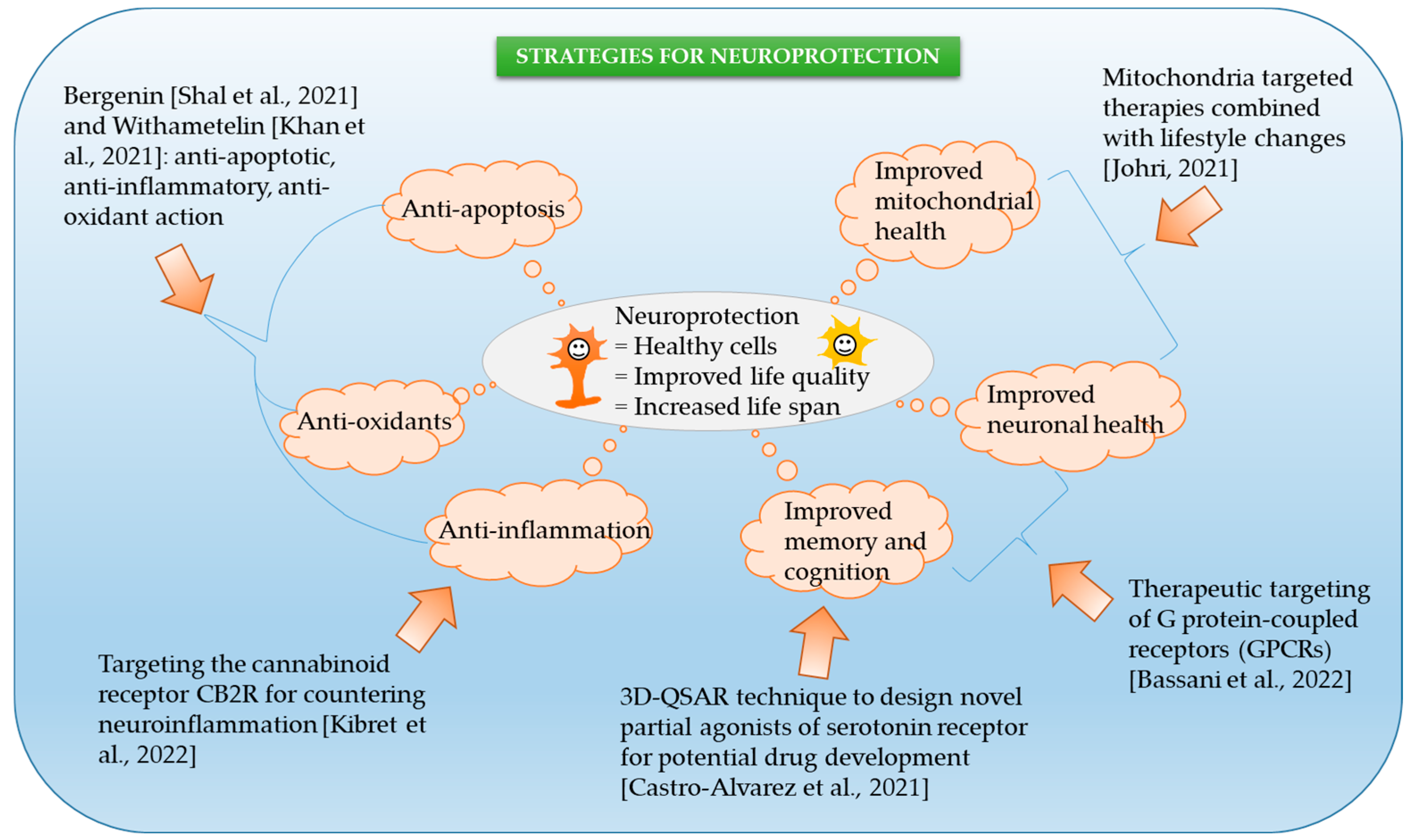Editorial: Special Issue on “New Frontiers in Molecular Mechanisms and Therapies in Neurological Diseases”
1. Discussion
2. Conclusions
Funding
Conflicts of Interest
References
- Shal, B.; Khan, A.; Khan, A.U.; Ullah, R.; Ali, G.; Islam, S.U.; Haq, I.U.; Ali, H.; Seo, E.K.; Khan, S. Alleviation of Memory Deficit by Bergenin via the Regulation of Reelin and Nrf-2/NF-kappaB Pathway in Transgenic Mouse Model. Int. J. Mol. Sci. 2021, 22, 6603. [Google Scholar] [CrossRef] [PubMed]
- Khan, A.; Shal, B.; Khan, A.U.; Ullah, R.; Baig, M.W.; Ul Haq, I.; Seo, E.K.; Khan, S. Suppression of TRPV1/TRPM8/P2Y Nociceptors by Withametelin via Downregulating MAPK Signaling in Mouse Model of Vincristine-Induced Neuropathic Pain. Int. J. Mol. Sci. 2021, 22, 6084. [Google Scholar] [CrossRef] [PubMed]
- Castro-Alvarez, A.; Chavez-Angel, E.; Nelson, R. Understanding the Molecular Basis of 5-HT(4) Receptor Partial Agonists through 3D-QSAR Studies. Int. J. Mol. Sci. 2021, 22, 3602. [Google Scholar] [CrossRef] [PubMed]
- Johri, A. Disentangling Mitochondria in Alzheimer’s Disease. Int. J. Mol. Sci. 2021, 22, 11520. [Google Scholar] [CrossRef] [PubMed]
- Bassani, D.; Pavan, M.; Federico, S.; Spalluto, G.; Sturlese, M.; Moro, S. The Multifaceted Role of GPCRs in Amyotrophic Lateral Sclerosis: A New Therapeutic Perspective? Int. J. Mol. Sci. 2022, 23, 4504. [Google Scholar] [CrossRef] [PubMed]
- Kibret, B.G.; Ishiguro, H.; Horiuchi, Y.; Onaivi, E.S. New Insights and Potential Therapeutic Targeting of CB2 Cannabinoid Receptors in CNS Disorders. Int. J. Mol. Sci. 2022, 23, 975. [Google Scholar] [CrossRef] [PubMed]
Disclaimer/Publisher’s Note: The statements, opinions and data contained in all publications are solely those of the individual author(s) and contributor(s) and not of MDPI and/or the editor(s). MDPI and/or the editor(s) disclaim responsibility for any injury to people or property resulting from any ideas, methods, instructions or products referred to in the content. |
© 2023 by the author. Licensee MDPI, Basel, Switzerland. This article is an open access article distributed under the terms and conditions of the Creative Commons Attribution (CC BY) license (https://creativecommons.org/licenses/by/4.0/).
Share and Cite
Johri, A. Editorial: Special Issue on “New Frontiers in Molecular Mechanisms and Therapies in Neurological Diseases”. Int. J. Mol. Sci. 2023, 24, 5601. https://doi.org/10.3390/ijms24065601
Johri A. Editorial: Special Issue on “New Frontiers in Molecular Mechanisms and Therapies in Neurological Diseases”. International Journal of Molecular Sciences. 2023; 24(6):5601. https://doi.org/10.3390/ijms24065601
Chicago/Turabian StyleJohri, Ashu. 2023. "Editorial: Special Issue on “New Frontiers in Molecular Mechanisms and Therapies in Neurological Diseases”" International Journal of Molecular Sciences 24, no. 6: 5601. https://doi.org/10.3390/ijms24065601
APA StyleJohri, A. (2023). Editorial: Special Issue on “New Frontiers in Molecular Mechanisms and Therapies in Neurological Diseases”. International Journal of Molecular Sciences, 24(6), 5601. https://doi.org/10.3390/ijms24065601





